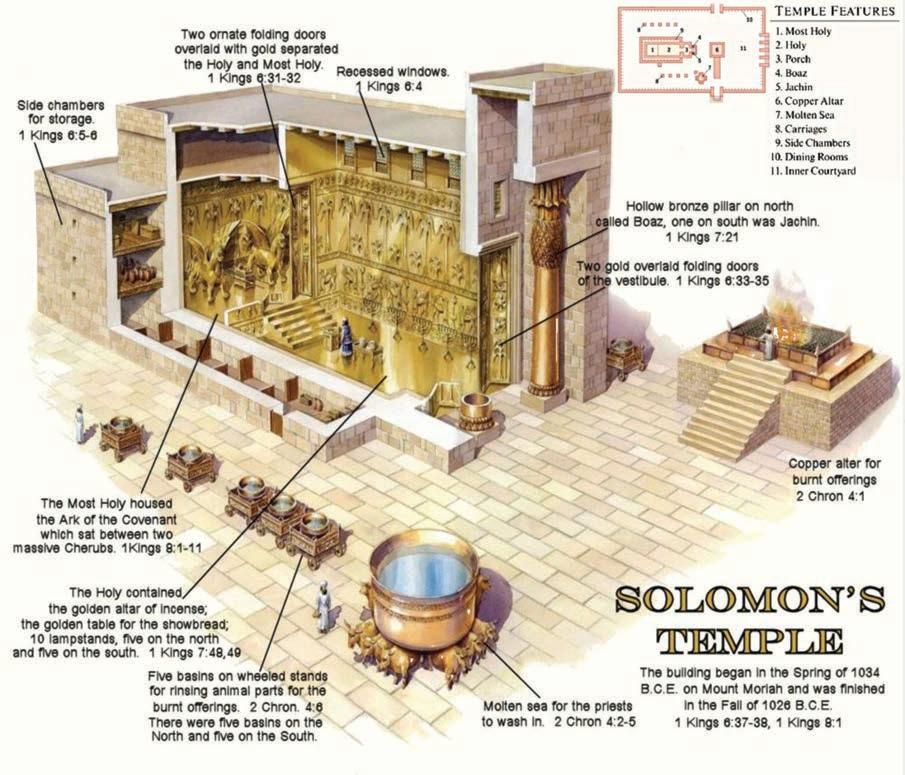
15 minute read
“Hail Mary, Full of Grace” or, What's in a Word?
Fr. Daniel Daly
(The material in this article is taken primarily from John McHugh’s The Mother of Jesus in the New Testament [Doubleday and Co. Inc., Garden City, N.Y.], 1975.)
Advertisement
“Hail Mary, full of grace the Lord is with thee.” Few words have found such an important place in the prayer life and music of Christian people. Gabriel's message to Mary proclaimed and event that would change the world forever. The incarnation of God was at hand. Most Christians are familiar with the words of the Latin hymn, “Ave Maria.” Not so familiar is the original Greek text, “Χαῖρε κεχαριτωμένη Μαρία, ὁ Κύριος μετὰ σοῦ.” Although there is more to Gabriel's words to Mary, in this article I will limit my remarks to these opening words.
Shakespeare once wrote “What’s in a word?” When we read the greeting of Gabriel to Mary, Shakespeare’s question has given us something to think about. What do these words mean? How should they be translated in English? Given the many new English (American) translations of the New Testament, there is good reason to raise these questions. Historically, the well-known English Bibles, the Wycliffe and the Douay Rheims, translated the words as “Hail Mary, full of grace, the Lord is with thee”. Other old versions translate κεχαριτωμένη as “found favor with.” Its use in Ephesians 1:6, however, is translated as grace in almost all English Bibles.
Things have changed. Although some of the newer versions have stayed with the traditional translations, in some of the more recent English versions, one finds translations that are questionable. For example:
Clearly, liberties have been taken with the text. St. Luke’s words are no longer being translated, they are being interpreted, possibly to make the message more “meaningful.” Unfortunately, these translations are questionable and misleading.
Hail, or Rejoice?
Questions regarding the meaning of the text are not new. More than eighty years ago, the French scholar Stanislas Lyonette, S.J., believed that the word “Hail” did not accurately translate the Greek text. He believed that “rejoice,” rather than “hail,” would be the better translation of the Greek word “Χαῖρε.” His research has revealed that there is much more to Gabriel’s words than a simple greeting. He opens up many new insights.
In his work “The Mother of Jesus in the New Testament,” John McHugh notes, “Before 1939 nearly all writers took the word Χαῖρε to be simply an everyday greeting devoid of doctrinal significance, the Greek equivalent of the Hebrew shalom or the Aramaic Shelam (Peace!).” In the non-biblical Greek-speaking world, the common greeting would have been Χαῖρε. But this is not true in the gospels. Gabriel’s greeting of Χαῖρε was not the greeting used by Jesus or his Apostles.
Jesus and the Apostles used the common Jewish greeting Shalom, or “peace.” Jesus greeted his Apostles after the resurrection with the words “peace be to you”, using the Greek word Εἰρήνη (Eirene/peace). In Luke 10:5, the disciples are told to say, “Peace to this house.” It is very significant that Χαῖρε appears only in Gabriel’s greeting to Mary. If one wished to express the Greek equivalent of Shalom, the word Εἰρήνη (Erirene/peace) would be used – not Χαῖρε.
McHugh asks, “If Luke’s only concern in 1:28 was to express a conventional greeting from Gabriel to Mary, why did he choose to write this greeting using the Greek Χαῖρε not Εἰρήνη (Erirene/peace), the Greek equivalent of Shalom?” In order to understand better the significance of Χαῖρε, Lyonnet examined the occurrences of the word Χαῖρε in the Septuagint, the Greek version of the Old Testament. Lyonnet’s research revealed three very significant things. First Χαῖρε was not used as a normal greeting. Secondly, it was only used to address a figure known as the Daughter of Zion. Thirdly and very significantly, this greeting of the Daughter of Zion always referred to the salvation of Israel. In the Gospels, Χαῖρε is used only for Mary.
This raises the question, Do the references to the Daughter of Zion and the salvation of Israel also have something to do with Mary? McHugh notes “In the books translated from the Hebrew…. Χαῖρε is never once found as the equivalent of the ordinary, everyday greeting Shalom. Shalom as a greeting is invariably rendered into Greek by the word Εἰρήνη meaning “peace”. In these same books (i.e., those translated from the Hebrew as distinct from those originally written in Greek), the imperative form Χαῖρε, far from be a conventional greeting, always refers to the joy attendant on the deliverance of Israel; wherever it occurs, it is a translation meaning “rejoice greatly!” “This is exactly the message of the angel in Luke 1:28–33.”
Of equal importance, we read that “with the exception of Lam[entations] 4:21, the imperative Χαῖρε in the Greek Old Testament is always addressed to ‘the Daughter of Zion’ and is always an invitation to ‘rejoice greatly’6 because “the Lord is with her” as king and savior….” These associations are found in the prophetic writings of the prophets Isaiah, Zephaniah, Joel, Zechariah and Micah. As will be shown below, these prophetic calls to rejoice will be the proclamation that the Daughter of Zion is important in the whole mystery of the salvation, not only of Jerusalem but of all creation, both man and the world.
The Prophets Call to Rejoice
As we look at the writings of the prophets, we are reading poetry. Through images and allusions, poetry takes language to a higher level. It is what gives beauty to language. Imagery is not restricted to the poets and prophets. We use it in our everyday speech. Saying that our friend Robert is a “diamond in the rough” says in a short phrase what might take a paragraph to say in simple prose. The poetic license of one of the prophets or St. Luke gives them the opportunity to say things and create an image of Mary that they would find difficult to express in any other way. If it can be said that an icon is theology in color, we might also say that prophetic poetry is color expressed in words. One icon of Mary would be insufficient to express all that the prophets have foretold of her.
In Isaiah’s prophecy about the “New Jerusalem” we find the most emphatic use of the imperative Χαῖρε: “Be glad, Jerusalem and gather together within her, all of you that love her; Rejoice with joy (Xapete Xapa) all you that grieve over her.… You will see, and your hearts will rejoice” (Isaiah, 66:10, 14). Salvation is at hand. “Behold, The Lord has proclaimed to the end of the earth: Say to the daughter of Zion, ‘Behold, your salvation comes; behold, His reward is with Him, and His recompense before Him.’ And they shall be called the holy people, the redeemed of the Lord; and you shall be called sought out, a city not forsaken” (Isaiah 62:11–12 ).
The prophets Zephaniah, Joel and Zechariah are also clear about the reason for the rejoicing. The deliverance of Israel is at hand! “The king of Israel is Lord in the midst of thee.” Other than the prophecy of Micah, the oldest of these prophecies is in Zephaniah. In Chapter 3, we find the call to rejoice addressed to the Daughter of Zion. The redeeming Lord, the King of Israel, is in her midst. The imagery here is broad, also addressing Jerusalem in a personal way.
The Prophet Joel, writing after the return of the exiles from Babylon in 539 B.C., speaks not of the Daughter of Zion but of the children of Zion. The occasion, however, is still one of rejoicing because of what the Lord has done. “Take heart, O land, rejoice (Χαῖρε) and be glad, For the Lord has done great things…. And you children of Zion rejoice and be glad in the Lord your God” (Joel 2:21).
The ninth chapter of Zechariah (written in 520–518 B.C.) is most interesting. It is here we find the theme of the Daughter of Zion and the Messiah in the same verse. We do not ordinarily think of Mary on Palm Sunday, but this text suggests that we might do so. “Rejoice (Χαῖρε) , O daughter of Zion! Shout aloud, O daughter of Jerusalem! Lo, your King comes to you; triumphant and victorious is He, humble and riding on an ass, on a colt the foal of an ass.” (Zechariah 9:9). If Jesus is the King coming into the city, the Daughter of Zion would seem to be the antitype of this Old Testament figure in the New Testament.
Given the connection between the prophet’s call on the Daughter of Zion to rejoice, we cannot be surprised that Hughs concludes that rejoice is “a more satisfactory interpretation of Gabriel’s words to Mary in Lk 1:28 than is given by the customary rendering ‘Hail.’ Of interest to an Orthodox readerz is Lyonnet’s remark that “this is the interpretation given by all the Greek exegetes and Fathers, from Origen to the Byzantine period.”7 An important example of this interpretation is the use by St. John of Damascus in the Ninth Ode of the Paschal Canon and in the Megalinarion of the liturgy for Easter Day. Here Χαῖρε is clearly associated with great joy and salvation. This suggests that Χαῖρε is better translated as rejoice.
In the Vespers for the Feast of the Annunciation the fathers of the Church, the word Χαῖρε is used repeatedly, not so much as a greeting, but as call to rejoice.
Translating Χαῖρε as rejoice rather than hail is the only rendering that does justice to the Old Testament background of the word. Gabriel is announcing the fulfillment of the entire Old Testament using the words of the prophets, “Rejoice, O Lady full of grace, do not fear, the Lord is with thee.”
The Daughter of Zion
As noted above, Χαῖρε, the proclamation of joy, is associated both with the theme of salvation and the figure of the Daughter of Zion, but who is the Daughter of Zion? And to what does Zion refer? The term Zion has a long and complex history. It referred to a number of places in the environs of Jerusalem over a number of centuries. At first it was used in a topographical sense. Later it was used in a poetic sense. Scholars believe that it referred to the site of the Jebusite city conquered by King David. Some scholars believe that it referred to a specific place north of the Temple, where the refugees from the north lived after the defeat of the Northern Kingdom of Israel in 721 B.C.10 The saving message of the prophets would have significant meaning to refugees living in very difficult circumstances. Later, Zion would be used to refer to Jerusalem itself as the religious capitol of the nation. In the New Testament Letter to the Hebrews, Zion even refers to the Heavenly Jerusalem. “But you have come to Mount Zion and to the city of the living God, the heavenly Jerusalem, to an innumerable company of angels” (Hebrews 12:22).
The term “daughter of….” came from the northern kingdom. It originally meant a town or village dependent upon an older community. Today we often use the term referring to parish churches as being “daughter parishes” of the parish from which they originated. The term was brought by the refugees from the north. It fittingly described the refugee community living as a daughter community of Jerusalem or Zion. McHugh believes that “such was the origin of the expression “Daughter of Zion.”11
Eventually the term took on wider meaning. The prophets used the term as a synonym for the “poor, the righteous, the remnant among the People of God.” The words Zion and Daughter of Zion became interchangeable. The term “Daughter of Zion” first appears in the Prophet Micah (737–696 B.C.).12 Micah’s message may have been addressed to the destitute refugees in this northern corner of the city. In Chapters 4 to 6, Micah paints an interesting picture of the Daughter of Zion. She is the personification of Jerusalem. She is like a woman in labor. She shall go forth from the city to Babylon (4:10). There is a plan of God at work which the enemy does not realize. She will not be defeated. “Arise and thresh, O daughter of Zion; For I will make your horn iron, And I will make your hooves bronze; You shall beat in pieces many peoples” (4:13). Micah then speaks of Bethlehem and the one who will come forth to rule Israel. We are very familiar with this text that speaks of the coming Messiah. Less quoted is verse 3. The woman who is in labor will now “bring forth” (5:3). Then there shall be a return of the people to Israel. This will be the remnant of Jacob (4:7).
The association of the Daughter of Zion with the birth of the Messiah in Bethlehem is an image that will be fulfilled with the birth of Christ. In the prophetic use of the term Daughter of Zion, it denotes the people, not an individual. McHugh suggests that in Luke’s text, Mary might personify the Daughter of Zion. She would be the embodiment and personification of the remnant of Israel.13 If we accept the validity of Lyonnet’s interpretation of Χαῖρε, with all the imagery that goes along with it in the Septuagint, Mary as the New Testament image of the Daughter of Zion is revealed as a person of profound importance. She is the one called to rejoice because she is the fulfillment of the daughter of Zion. She is the one who now hears the message of redemption, not just as something that lies in the distant future, but in the present life of this young woman. She is the embodiment of the remnant of Israel. She is herself the new Jerusalem upon whom the glory of the Lord has risen. By associating Mary with the ancient prophecies, St. Luke makes of her a corporate personality embodying the people redeemed by God. As said above, one icon of Mary cannot contain or express all that is said about her. In the hymnography of the church the best verbal image of Mary is the Akathist of St. Romanos.
I would not wish to minimize the importance of the expression “full of grace” (κεχαριτωμένη) which follows the opening words of Gabriel’s greeting. Regrettably, it is not possible to speak of the expression in any adequate way in this short article. McHugh notes that the only other use of the word occurs in Ephesians 1:6. Here it is translated as “that grace freely bestowed on us in the Beloved One.”14 Mary’s grace was singular in that she would bring forth the Author of grace.
A final, brief observation should be made regarding the expression “The Lord is with Thee.”This expression is only used in the Old Testament when God is assuring someone that He will be with certain people who had a very special mission from God (e.g., Abraham, Isaac, Jacob, Moses and Jeremiah). In using these words to Mary, Gabriel is telling her that she too will have an important destiny, and the Lord will be with her.15 Mary’s reaction to the message is like that of the Old Testament figures who heard these same words: she was afraid, and she wondered what this greeting might portend. CONCLUSION
Did St. Luke intend to represent Mary as the antitype of the Daughter of Zion? The Swedish theologian Harald Sahlin argued that “in the Hebrew source used by Luke Mary was envisaged almost as an allegorical figure, certainly as a living symbol of the Daughter of Zion.” Now while Lyonnet in 1939 did not expressly make this identification, and though Sahlin is careful to state that Luke himself did not perceive that his source was presenting Mary as the Daughter of Zion, almost all who have subscribed to their basic ideas have taken it that the evangelist both perceived and intended the typological reference, and meant his readers to see Mary as personifying the Daughter of Zion in the day of eschatological salvation. In this form, the interpretation has been accepted almost unanimously among Catholic writers. Those who have followed the arguments of Lyonnet and Sahlin have concluded that Luke saw Mary, the historical person, as embodying in fact the whole corporate personhood of Israel.16 Her positive response to Gabriel became the response of humanity to the divine plan of salvation. “Mary held in her hands the destiny of Israel, and of the world. Only when Mary utters her Fiat does the angel depart from her.”17
I have found this interpretation convincing. For those who follow the sola Scriptura approach to the Bible, these insights offer a deeper understanding of who Mary was.









